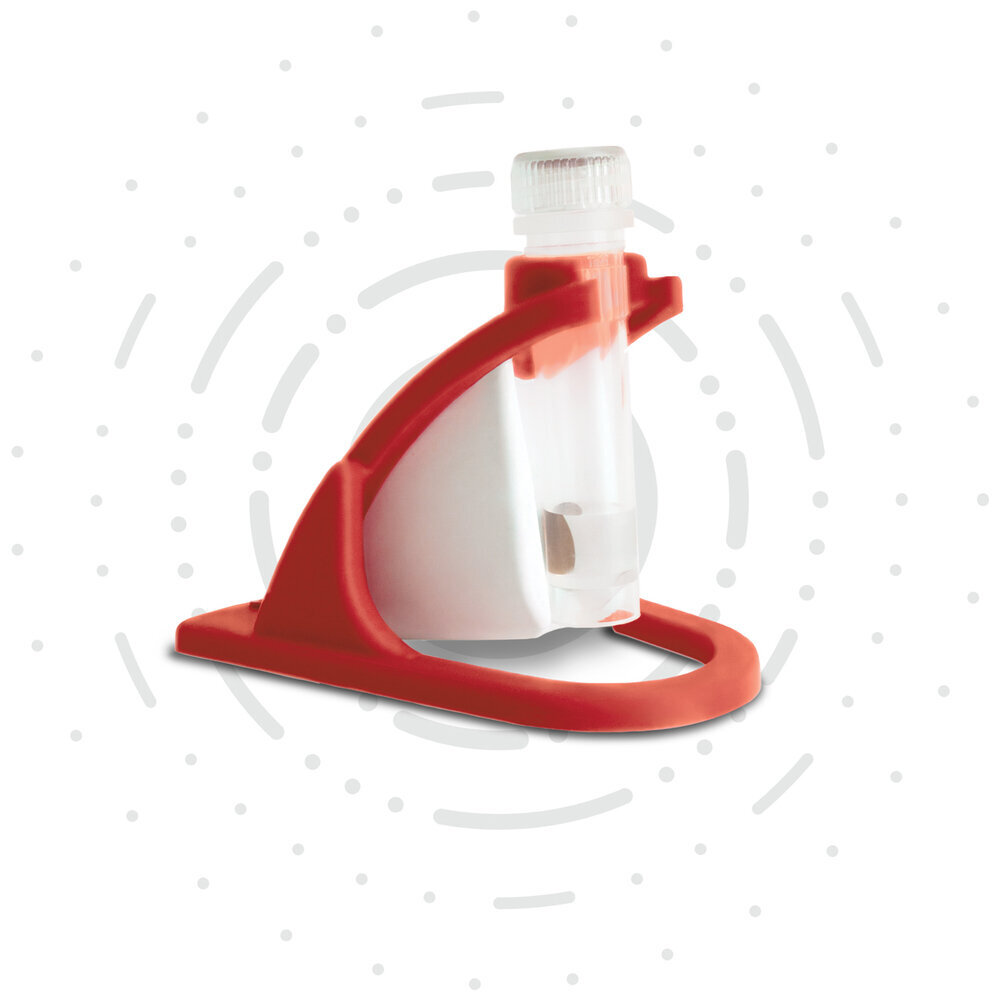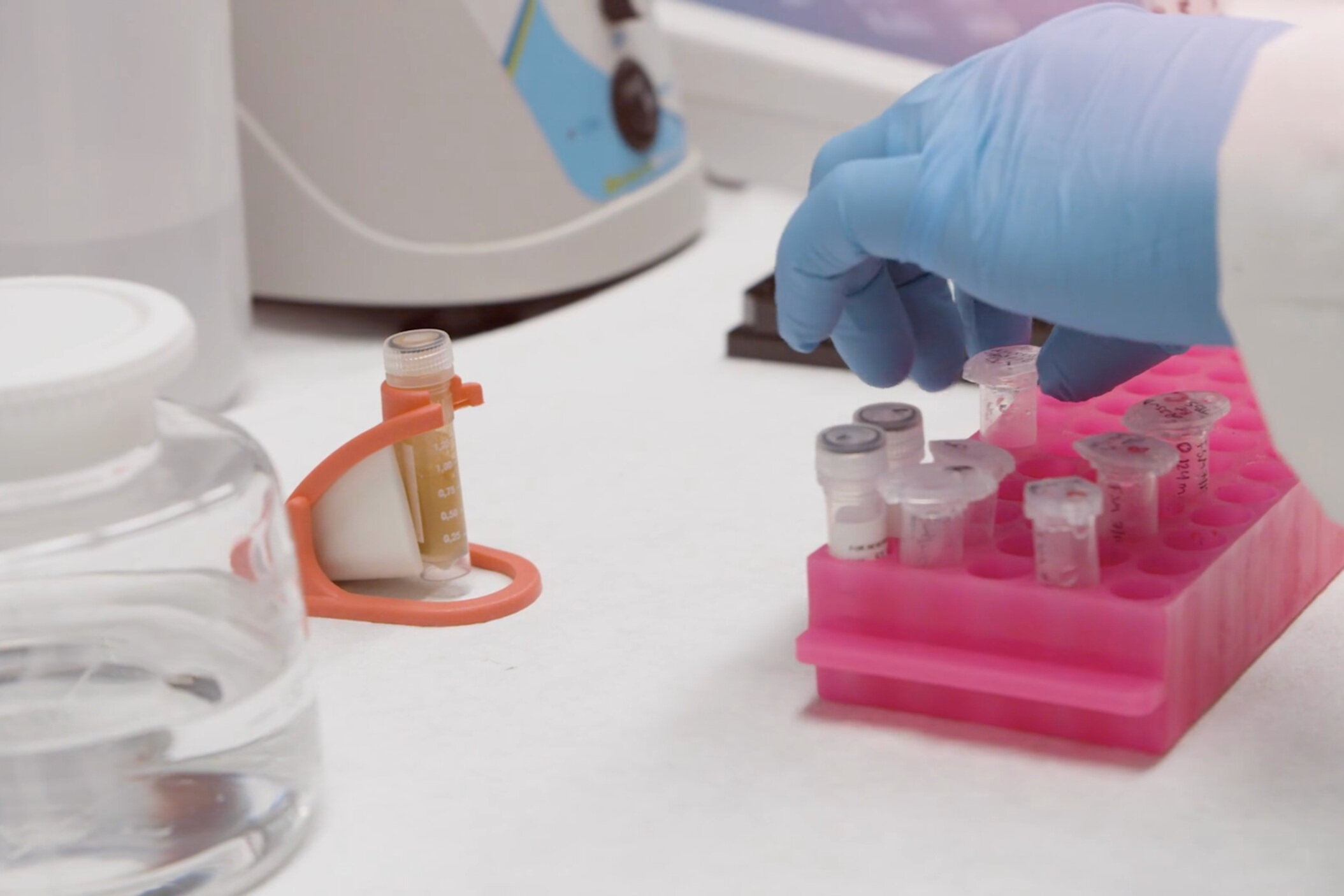VeraPrep Interference
“We have traditionally had to perform two separate blocking studies to identify a potential interference in a patient sample. With VeraPrep Interference, my team can quickly and easily run one test and get a definitive answer whether or not the interference is present. This allows me to inform the ordering clinician of exactly what we are dealing with and help guide patient management.”
Nikolina Babic, Ph.D., DABCC, FACB
Director of Clinical Chemistry Labs & POCT
Medical University of South Carolina
“We have traditionally had to perform two separate blocking studies to identify a potential interference in a patient sample. With VeraPrep Interference, my team can quickly and easily run one test and get a definitive answer whether or not the interference is present. This allows me to inform the ordering clinician of exactly what we are dealing with and help guide patient management.”
Nikolina Babic, Ph.D., DABCC, FACB
Director of Clinical Chemistry Labs & POCT
Medical University of South Carolina
“We have traditionally had to perform two separate blocking studies to identify a potential interference in a patient sample. With VeraPrep Interference, my team can quickly and easily run one test and get a definitive answer whether or not the interference is present. This allows me to inform the ordering clinician of exactly what we are dealing with and help guide patient management.”
Nikolina Babic, Ph.D., DABCC, FACB
Director of Clinical Chemistry Labs & POCT
Medical University of South Carolina
VeraPrepTM Interference powered by TRU Block®
Detect HAMA, heterophilic and biotin interferences in one easy test.
While it is known that interferences in lab samples are common,¹ the threat to patients is often underestimated. Of the 100 million lab tests that are incorrect each year due to sample interferences, 50% lead to wrong diagnoses, resulting in 16 million unnecessary treatments per year.² Worse yet, but unmeasurable, is the implication of missed diagnoses resulting in delayed treatment and disease progression. Still, it has been difficult to address the issue of sample interferences until now.
Veravas has created a unique sample screening system that uses magnetic particle (nanobead) technology and magnetic separation to detect the most common immunoassay interferences, including HAMA, heterophilic, and free biotin interferences. With the easy-to-use, proprietary nanobead technology in VeraPrep Interference, laboratories can quickly identify which interferences a sample contains with just one test. This reduces the number of tests required to determine the cause of sample interference, saving the lab time and money. It also improves patient care, as the care team has the necessary information to accurately retest the patient.
VeraPrep Interference
At-A-Glance
For Research Use Only (RUO)
Detects heterophilic interferences including HAMA and human anti-animal antibodies (mouse, rabbit, goat, sheep, and bovine) and avidin/biotin assay-specific interferences such as anti-streptavidin, anti-biotin antibodies, and free biotin
Simple, easy 15-minute protocol
Works with serum or plasma
Flexible sample size, as little as 50 µl
No sample dilution
VeraPrep Interference removes more interferences, faster than
other methods, in one easy test.
The VeraPrep Difference
| Feature | VeraPrep Interference | Scantibodies HBR Tubes |
|---|---|---|
| Detects and removes RF and hetrophilic interferences using a single reagent | Yes | No, requires two different reagents |
| Detects and removes free biotin interference | Yes | No |
| Detects and removes anti-streptavidin and anti-biotin interference | Yes | No |
| Animal antibodies targeted | Mouse, rabbit, goat, sheep, bovine | Not specified |
| One tube process | Yes | No |
| Minimum sample volume required | 50 μL | 500 μL |
| Larger sample sizes can be used | Yes | No |
| Procedure time | 15 mimutes | 60 minutes |
References
1. • Samarasinghe S, Meah F, Singh V, et al. Biotin interference with routine clinical immunoassays: understand the causes and mitigate the risks.
Endocrine Practice: August 2017, Vol. 23, No. 8, pp. 989-998.
• Favresse J, Lardinois B, Nassogne MC, Preumont V, Maiter D, Gruson D. Anti-streptavidin antibodies mimicking heterophilic antibodies in thyroid
function tests. Clin Chem Lab Med. 2018 Jun 27;56(7):e160-e163 Clin Chem Lab Med. 56(7): e160-e163.
• Boscato LM, Stuart MC. Heterophilic antibodies: a problem for all immunoassays. Clin Chem, 1988; 34(1): 27-33.
• Kricka LJ. Human Anti-Animal Antibody Interferences in Immunological Assays. Clin Chem, 1999; 45(7): 942-956.
• Sztefko K. Interferences in immunoassay. Przegl Lek, 2002; 59(6): 477-480.
• Chiu NHL and Christopoulos TK. Advances in Immunoassay Technology. ISBN 978-953-51-0440-7; Publisher: InTech, March 2012;
Schiettecatte J, Anckaert E, Smitz J. Interferences in Immunoassays. Chapter 3: 45-62.
• Kricka LJ. Interferences in immunoassay – still a threat. Clin Chem, 2000; 46(8 Pt 1): 1037-1038.
• Emerson JF, Lai K. Endogenous Antibody Interferences in lmmunoassays. Laboratory Medicine, Volume 44, Issue 1, February 2013, Pages 69–73.
2. • Tate J, Ward G. Interferences in Immunoassay. Clin Biochem Rev, 2004; 25(2): 105-120.
• Haymond, S. What Everyone Should Know about Lab Tests. Scientific American Blog Network, May 2016.


